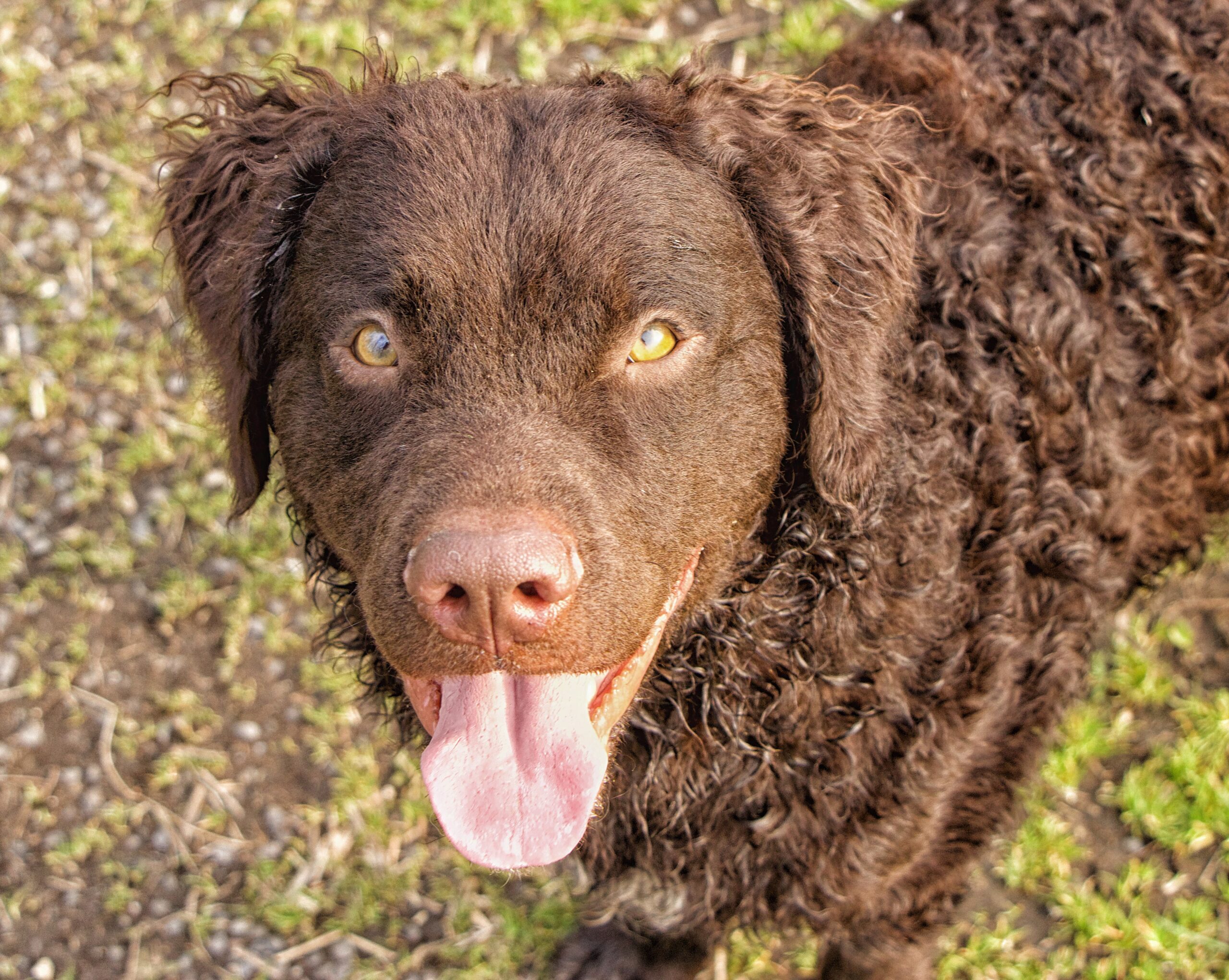The Curly-Coated Retriever, also known as the Curly, is the tallest of the retriever breeds and is easily distinguishable by its mass of tight curls covering its body.
It is also more leggy and agile than other retriever breeds and moves with a great deal of grace. Bred to hunt waterfowl, the Curly loves water and is a peerless swimmer. As sporting dogs, they require a good deal of exercise and are best suited to active families and individuals that enjoy lots of outdoor activities. This is a breed that is very good-natured and even-tempered and will be affectionate and loyal to its family. Around the home, they are generally placid, calm and laid back. They also get on well with other dogs and household pets too. In contrast, they can be somewhat aloof with strangers, a wariness that makes them better guard dogs than some of the more gregarious retrievers. Early socialisation will help counter any shyness and mistrust of strangers.

History
It is believed that the Curly-Coated Retriever is the oldest of the Retriever breeds, dating back to England in the 1700s. They were used to hunt and retrieve waterfowl, and their ability in the water is still evident today. They were developed from the now extinct English Water Spaniel, with the addition of Poodle blood, to increase the tightness of the curl making the coat even more waterproof.





